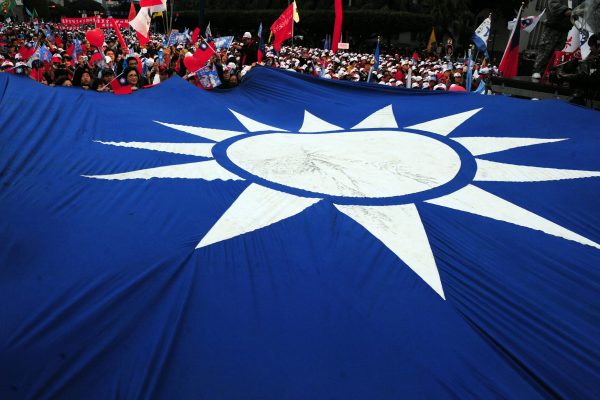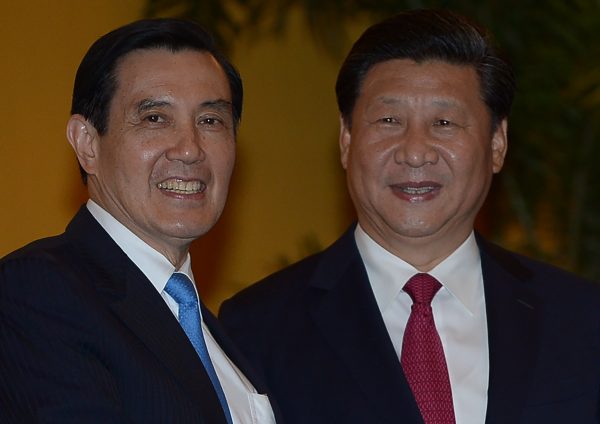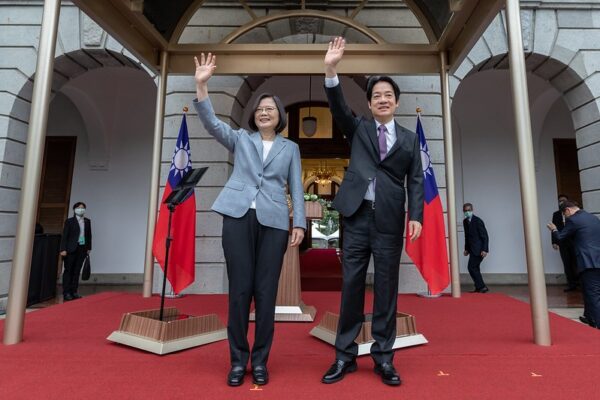Taiwan President Tsai Ing-wen of the Democratic Progressive Party has visited the United States, while Taiwan’s former president Ma Ying-jeou of the Kuomintang opposition party visited mainland China for an ancestor worship trip.
Observers believe that in the next ten days, the Democratic Progressive Party (DPP) and the Chinese Nationalist Party or Kuomintang (KMT) will compete fiercely on pro-U.S. and pro-China topics, as the parties ramp up to Taiwan’s 2024 presidential election.
Tsai set off to visit Central American allies on March 29, making stops in New York on the way. When passing through New York on March 30, she received the Global Leadership Award from the Hudson Institute. She is scheduled to pass through Los Angeles on her return trip on April 5, when she will give a speech at the Reagan Library. She is also expected to meet with U.S. House Speaker Kevin McCarthy (R-Calif.).

In Beijing, Zhu Fenglian, a spokesperson for China’s ruling Chinese Communist Party’s Taiwan Affairs Office, threatened retaliation for any meeting with McCarthy shortly before Tsai’s departure, “We firmly oppose it and will take resolute countermeasures,” but did not explain the specific actions that the regime would take.
Ma’s Trip to Mainland China
Meanwhile, former Taiwanese President Ma Ying-jeou left for mainland China on March 27 to visit the Nanjing Sun Yat-sen Mausoleum. Sun is the founding father of the Republic of China (1911-present). On March 28, Ma presented flowers to a bronze statue of Sun.
The island of Taiwan was ceded to Japan by the Qing dynasty of China after its defeat in the first Sino-Japanese war in 1895. Taiwan was under Japanese colonial rule until 1945, when Japan surrendered and returned Taiwan to the Republic of China (ROC).
In 1949, when the communists took over mainland China and established the communist state under the People’s Republic of China (PRC), the KMT government of the ROC retreated to Taiwan—the last territory of the ROC, which still exists today. Taiwan’s official name is the ROC.

International media noticed that the CCP in mainland China welcomed Ma Ying-jeou’s visit at a downgraded level—a deputy provincial level, unlike the deputy state head level with which they greeted former Nationalist Party chairman Lian Zhan during his visit in 2005, which reflects the CCP’s doubling down on the claim that Taiwan is a province for the CCP to rule.
Regarding the ROC and PRC issue, U.S.-based China affairs commentator Tang Jingyuan pointed out in his talk show for Epoch Times’ sister media NTD that the Republic of China has been established for 112 years, since 1911, and its legal status has never ceased for a day.
“The biggest reason for China’s division, so far, is that the CCP created civil strife and established a separate regime. In essence, there is no difference between the current situation of ‘separate rule by the sea’ between the two sides of the Taiwan Strait and the ‘separate rule by the river’ in history that divided the north and the south of China as different states.”
During Ma’s visit, he made mention of Taiwan by its official name, the Republic of China, on April 1 when making a speech at the burial site of his ancestors in Hunan Province’s Xiangtan city.

However, when meeting with the communist party’s secretary of Jiangsu Province, Xin Changxing, Ma expressed that he will “adhere to the 1992 consensus.” In 1992, the then-ruling KMT of Taiwan signed an agreement with the CCP, in which both parties agreed that there is only one China. However, the agreement was ambiguous, as it didn’t define “China.” The CCP insists that the “one China” is ruled by the PRC. Some people in Taiwan reject the 1992 consensus.
Ma also said in an interview with mainland Chinese media, “I hope that both sides of the Taiwan Strait will pursue peace and avoid war.”
Regarding Ma’s visit to the mainland, Chen Wen-Chia, a senior consultant of the Taiwan National Policy Research Institute and director of the National and Regional Development Research Center of Kainan University, told The Epoch Times on March 29, “The CCP has two strategies. On the one hand, they welcome Ma’s visit. On the other hand, they deliberately downgrade the reception for him to the level of former regional leader to cause dissatisfaction among Taiwanese people.”
“For Taiwanese people, they are generally optimistic about Ma’s visit to China. But if he fails to properly represent Taiwan’s sovereignty and dignity, his trip may cause negative effect (on the KMT’s election campaign),” Chen said.
Wu Chonghan, an associate professor at the Department of Foreign Affairs of National Chengchi University in Taiwan, told The Epoch Times on March 28, “Now that the competition between the United States and China is so fierce, and President Ma is visiting China now, he wants to take a more active and conciliatory role in the changing international situation.”
“There are also different opinions within the KMT regarding the 1992 Consensus,” Wu added. “This time Ma visited China, he mainly wanted to direct the Blue Camp (KMT)’s cross-strait rhetoric toward being pro-China.”
Eyes on 2024
Taiwan will hold its presidential election on Jan. 13, 2024. The current chairman of the ruling DPP and the current vice president, Lai Ching-te, has completed the party registration and will represent the DPP to run as the next president. The KMT hasn’t announced their presidential candidate yet.

Wu said, “This time, it feels like a competition, as Tsai is visiting the United States while Ma is visiting mainland China. They are also planning their parties’ stance on cross-strait relations or relations with the United States.
Chen believes that under current tensions across the Taiwan Strait, Ma intends to use his “peace trip” to help the KMT gain more votes and boost the KMT’s presidential campaign.
Chen Fang-yu, assistant professor of politics at Soochow University in Taiwan, told The Epoch Times on March 28, “Ma Ying-jeou’s pro-China expression may have a negative impact on the election of the KMT because after 2020, the Taiwanese public’s [negative] opinion toward China has not changed much. Although the DPP lost in the 2022 local elections, the public’s views on the China issue has not changed.”
According to a survey released by Taiwan’s Mainland Affairs Council on March 23, 83.7 percent of the Taiwanese surveyed agreed with the resumption of orderly exchanges between the two sides of the Strait after the pandemic. With regard to cross-Strait relations, 88.9 percent of the people support “maintaining the status quo in a broad sense” but for the CCP’s proposal of “one country, two systems,” 83.6 percent of respondents disapproved.
Additionally, 84.3 percent of respondents disagreed with the CCP’s ongoing push for other countries to sever diplomatic relations with Taiwan’s and hindering Taiwan’s participation in the international affairs.
Chen Wen-chia told The Epoch Times on March 29 that cross-strait relations between Taiwan and mainland China are unlikely to improve anytime soon.
“Under the DPP administration, Taiwan is joining the alliance with the United States and Japan to contain the CCP. Meanwhile, the CCP confronts the United States, while cooperating with Russia. So, it will not show goodwill towards Taiwan officially,” he said. “The only thing that is going between the two sides of the strait is non-governmental exchanges and contacts.”
U.S.-based current affairs commentator Li Linyi told The Epoch Times that the moves of the KMT and DPP are essentially testing Taiwan’s public opinion as both parties fight for power in the 2024 Taiwan general election.
“At present, the CCP is mainly using indirect means to join forces with pro-communist forces on the island to try to influence public opinion in Taiwan. The United States will take measures to counter the CCP, based on CCP’s actions toward Taiwan.
“The four-way interaction between the KMT, the DPP, the CCP, and the United States is likely to have a decisive impact on the final outcome of the general election in Taiwan next year,” Li said.
Lin Cenxin contributed to this report.

